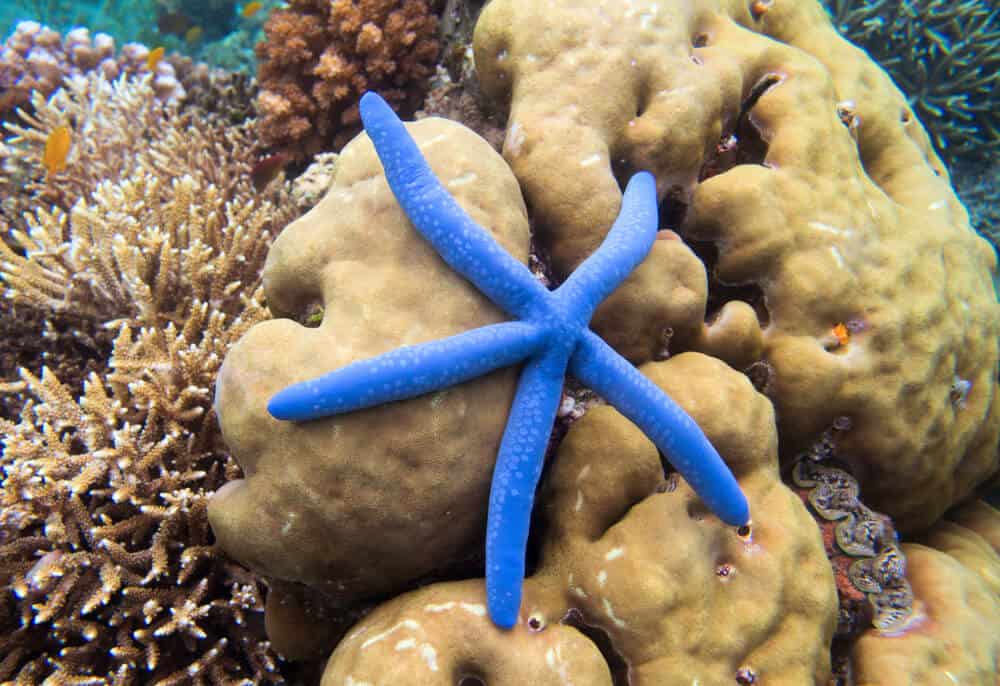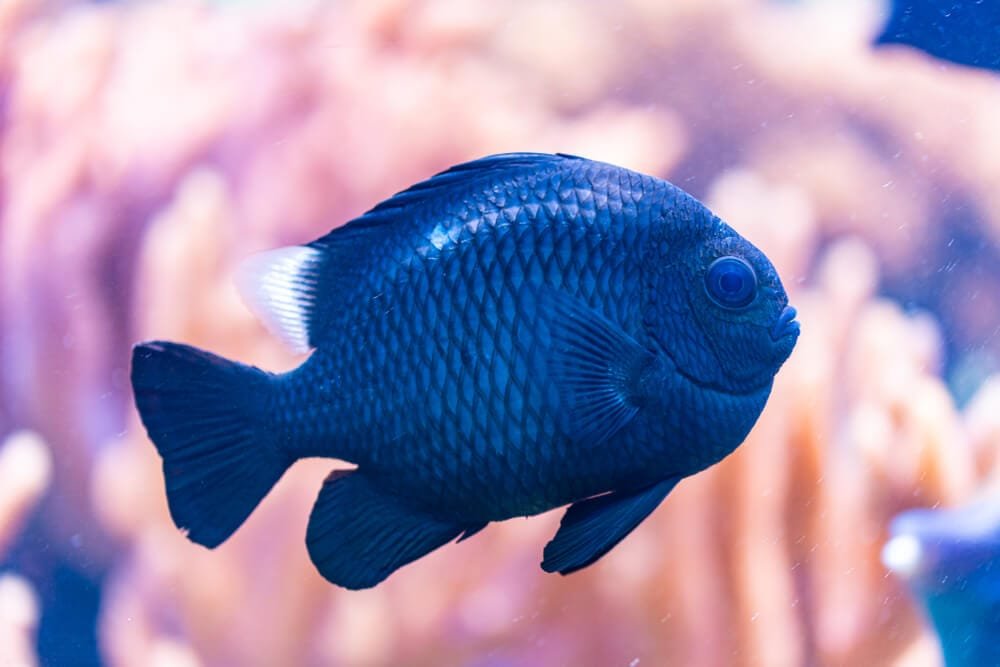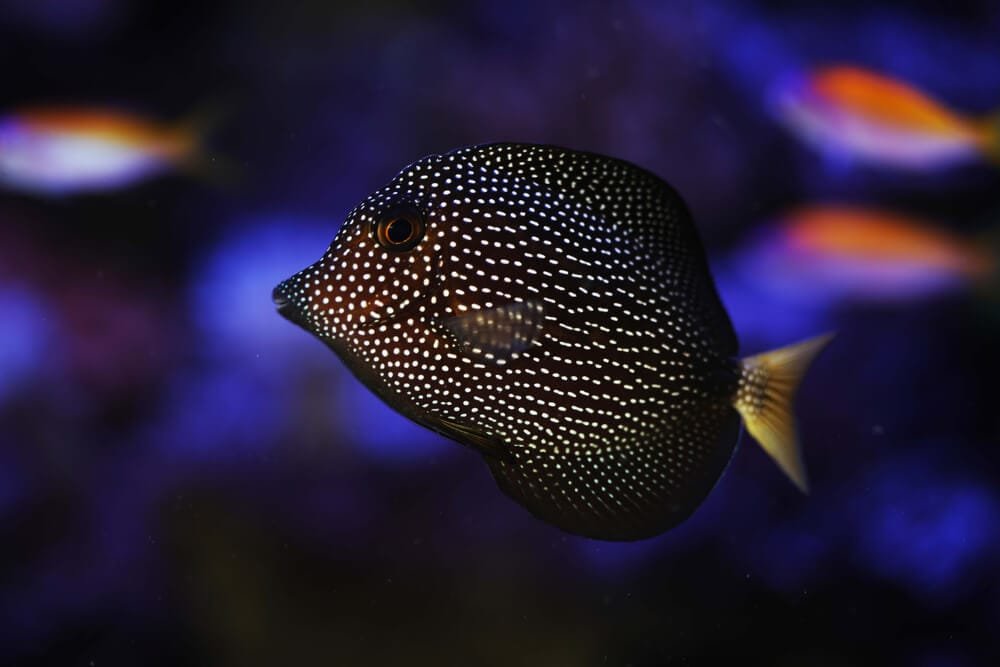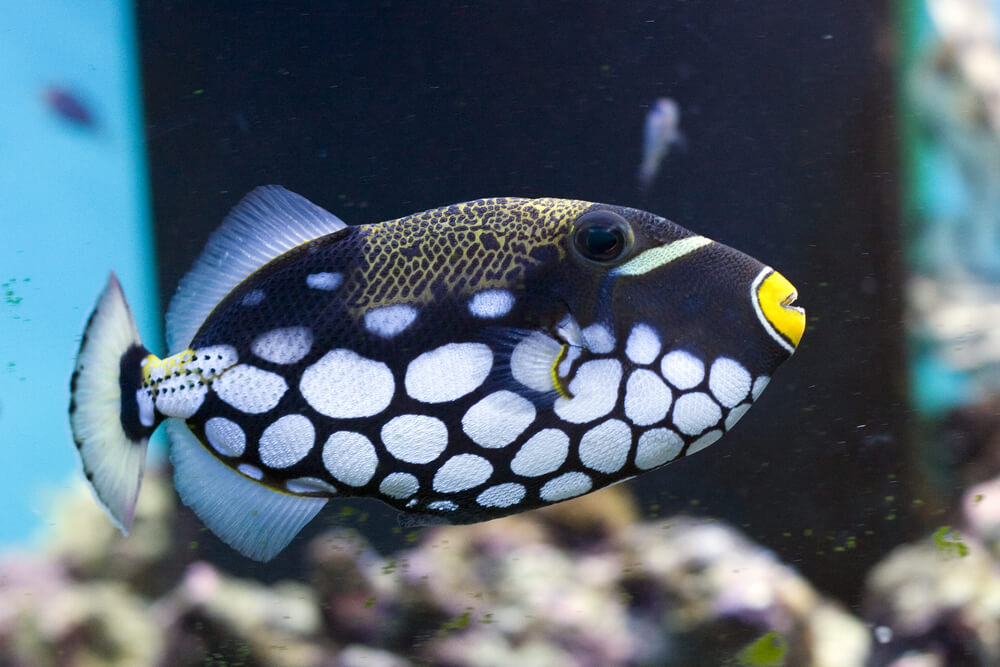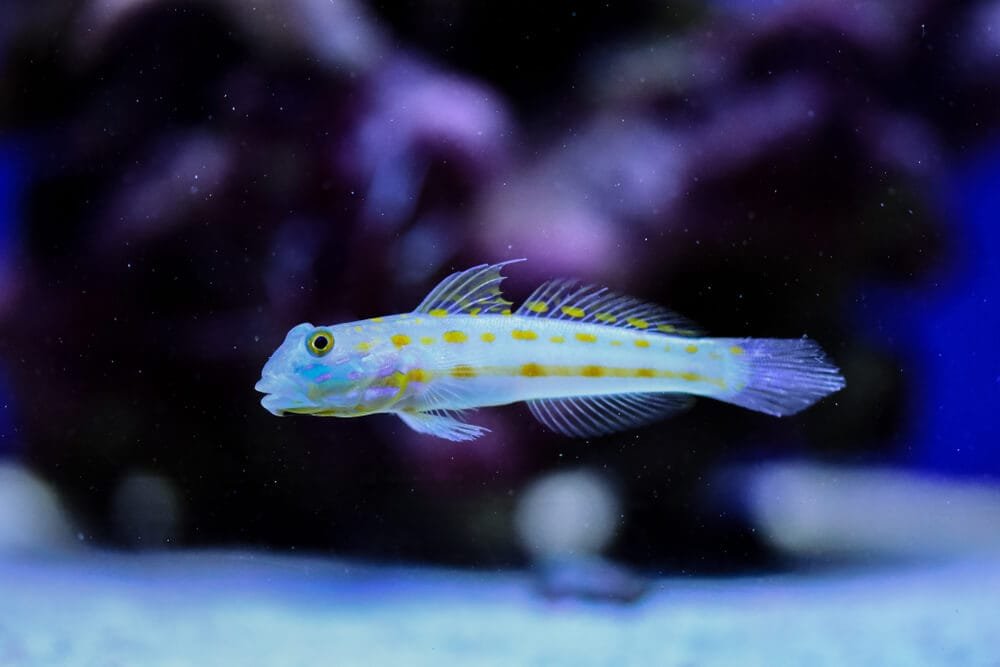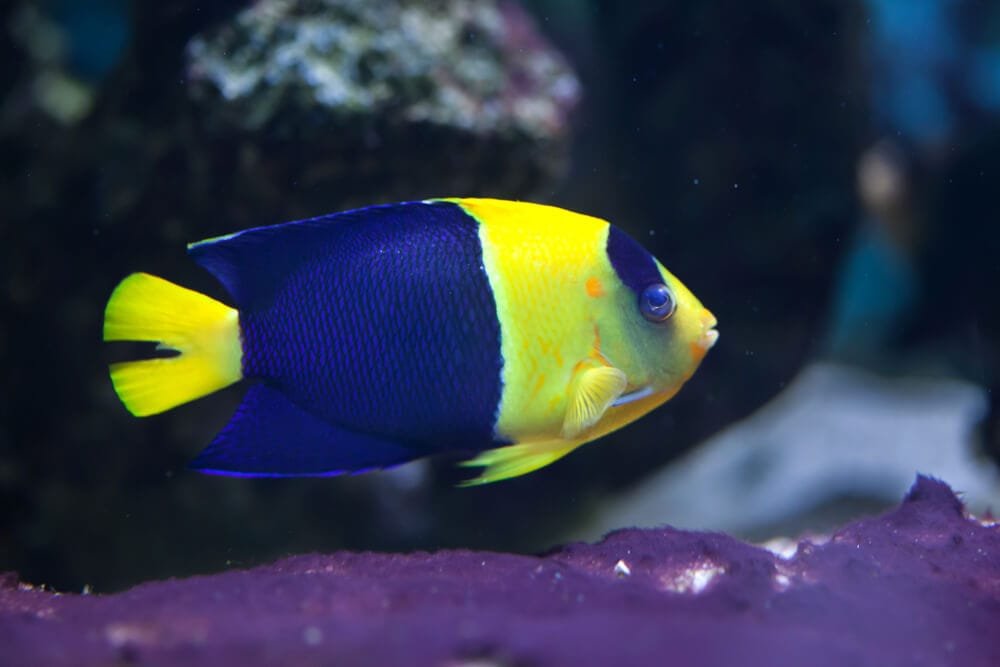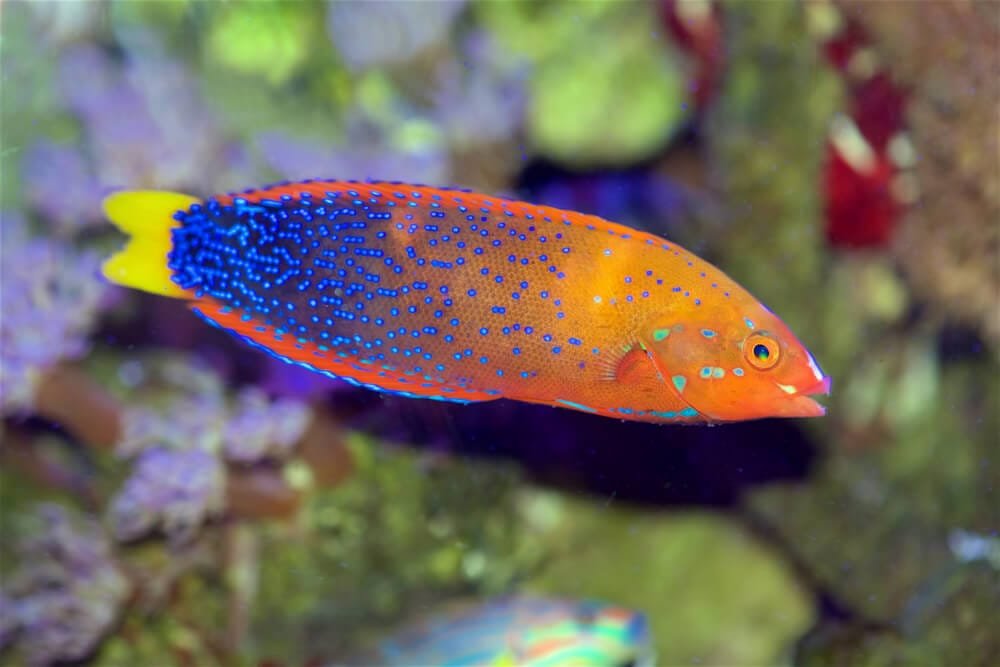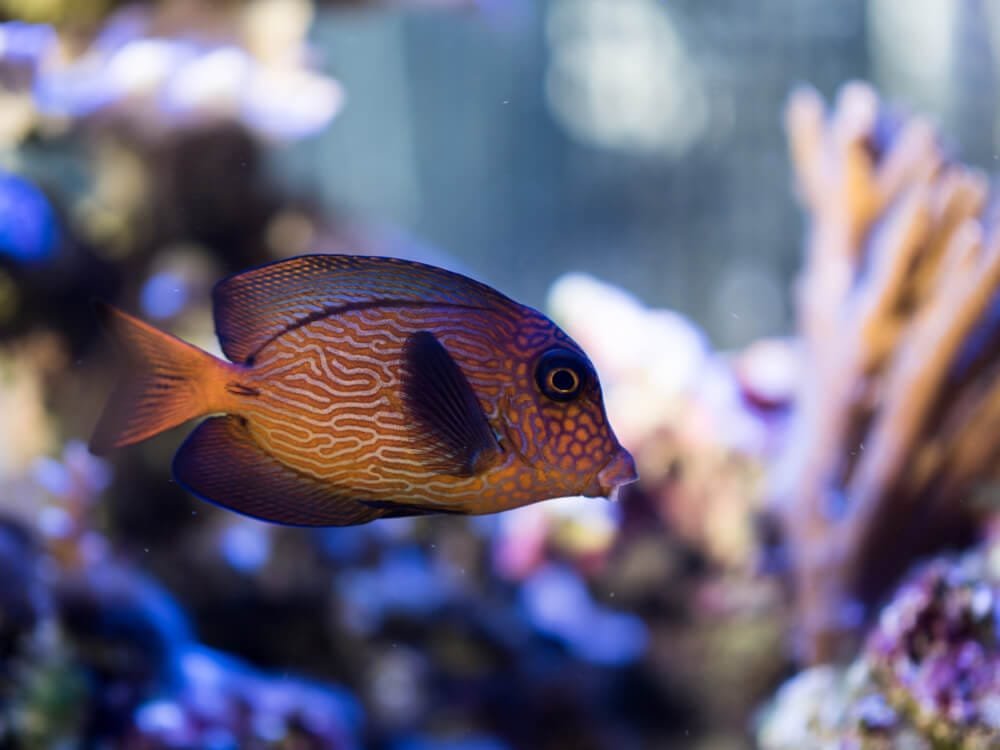Longnose Hawkfish: Habitat, Behavior and Interesting Facts
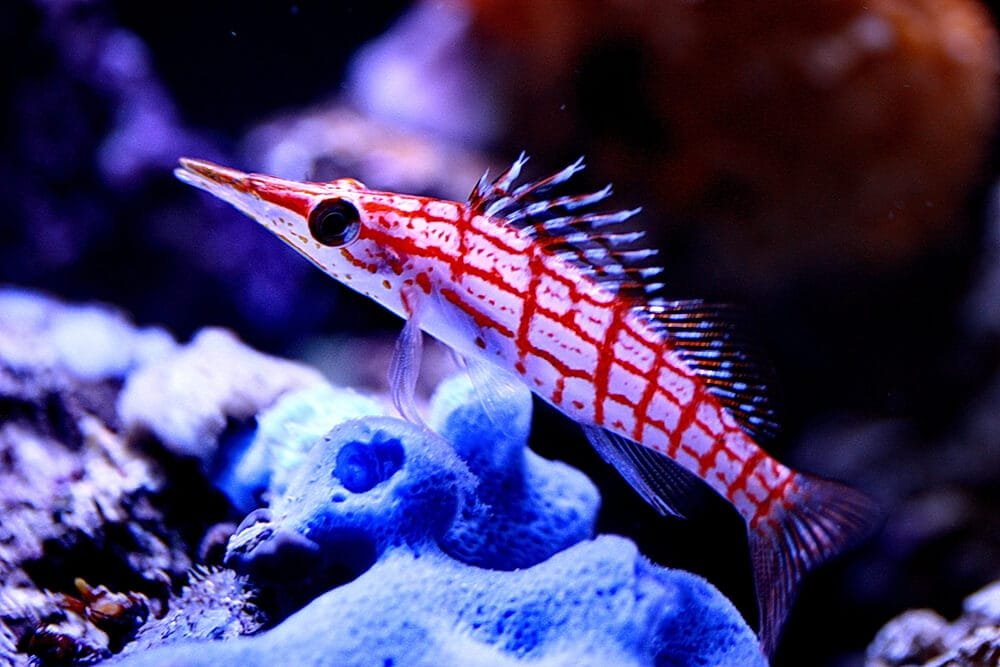
Get ready to dive into the fascinating world of the Longnose Hawkfish! With its distinctive elongated snout and vibrant colors, this unique fish is a true standout in the ocean. From its natural habitat to its hunting techniques, we will explore all the intriguing aspects of the Longnose Hawkfish in this article. So, grab your snorkeling gear and get ready to discover the secrets of this remarkable marine creature.
Physical Description
The Longnose Hawkfish, as its name suggests, is characterized by its long snout or nose. It has a cylindrical body shape and can grow to be around 4 to 6 inches in length. Despite its small size, this fish is known for its vibrant and eye-catching colors which vary depending on its age and location. Juvenile Longnose Hawkfish sport a beautiful orange coloration with intricate white patterns, while adults have a reddish-brown hue with white spots. They also possess spines on their dorsal fins, which add to their unique appearance.
Habitat and Distribution
Coral Reefs
Longnose Hawkfish are commonly found in tropical coral reef ecosystems. These vibrant and diverse habitats provide the perfect environment for these fish to thrive. The fish often seek shelter among the branches of gorgonian corals, where they can camouflage themselves and hide from predators. They are also known to inhabit the crevices and caves within the reef, utilizing their sharp eyesight to spot potential prey.
Geographical Range
Longnose Hawkfish have a relatively wide geographical range, being found in the Indo-Pacific region. They can be spotted in the waters of the Red Sea, the Indian Ocean, and extend as far as the Eastern Pacific, including the coasts of Mexico and Central America. Their adaptability to different environments has allowed them to establish a broad distribution range.
Depth Range
These fish can be found at various depths within their habitats. They are typically observed at depths ranging from 15 to 200 feet, but have been known to venture shallower or deeper depending on their feeding and reproductive needs.
Behavior and Diet
Territorial Nature
Longnose Hawkfish are known for their territorial behavior. They stake out their preferred coral branches or crevices within the reef and defend them from intruders. They can often be seen perched motionless, observing and guarding their territory. This territorial nature also extends to feeding habits, as they tend to target specific prey within their territory.
Feeding Habits
Longnose Hawkfish are carnivorous, feeding primarily on small invertebrates including shrimps, crabs, and small fish. Their hunting strategy is patient and calculated. They patiently wait for their prey to come within striking distance before swiftly lunging forward and capturing their meal with a quick and precise bite. Their elongated snout aids them in reaching into crevices and extracting hidden prey.
Predators
While Longnose Hawkfish may be skilled hunters, they are not immune to predation themselves. Larger fish, such as groupers and other predatory species, pose a threat to these small hawkfish. Additionally, some species of moray eels and larger crustaceans may also prey upon the Longnose Hawkfish if given the opportunity.
Reproduction and Life Cycle
Courtship and Mating
During the mating season, Longnose Hawkfish engage in courtship rituals to attract a mate. They perform intricate mating displays, involving circling movements and fin displays to communicate their intentions. Once a pair has formed, they cement their bond by performing a ritualistic dance before ultimately spawning.
Egg Development
After mating, female Longnose hawkfish lay adhesive eggs, attaching them to the coral substrate or the branches of gorgonian corals. The male then guards the eggs, protecting them from potential threats until they hatch. This guarding behavior ensures the survival of the offspring and increases their chances of successfully entering the next stage of their life cycle.
Juvenile Stage
Once the eggs hatch, the juvenile Longnose Hawkfish enter a stage where they are highly vulnerable and must navigate the reef ecosystem with caution. At this young age, their vibrant orange coloration and intricate white patterns help them blend in seamlessly with their surroundings, offering protection from potential predators. They grow quickly, gradually developing the distinctive red-brown coloration seen in adult Longnose Hawkfish.
Interactions with Humans
Aquarium Trade
Due to their vibrant colors and unique appearance, Longnose Hawkfish are sought after by aquarium enthusiasts. They are often part of the marine aquarium trade, making their way into home and public aquarium exhibits. However, it is important for potential owners to research and understand the specific needs and requirements of these fish to ensure their well-being in captivity.
Conservation Status
The Longnose Hawkfish is not currently listed as a threatened or endangered species. They have a relatively wide distribution range and do not face significant population declines at present. However, it is crucial to stay vigilant and monitor their populations closely to ensure their long-term survival.
Potential Threats
While Longnose Hawkfish populations are currently stable, there are potential threats that could impact their future. Habitat destruction, such as coral reef degradation and pollution, poses a risk to their survival. Overfishing and destructive fishing practices can also have indirect impacts on this species and their habitat. Additionally, climate change and ocean acidification have the potential to disrupt the delicate balance of the marine ecosystem, which could have adverse effects on the Longnose Hawkfish and other marine species.
Interesting Facts
Camouflage Ability
One of the most fascinating aspects of the Longnose Hawkfish is its incredible camouflage ability. They have the remarkable ability to change their coloration to match their surroundings, allowing them to blend seamlessly into their coral reef habitat. This adaptive behavior provides them with protection against potential predators, making them difficult to spot amidst the vibrant colors of the coral reef.
Unique Hunting Technique
Longnose Hawkfish employ a distinctive hunting technique that sets them apart from other predatory fish. While many fish rely on speed and agility for capturing prey, the Longnose Hawkfish takes a more patient approach. By perching motionless on a coral branch or within a crevice, they observe their surroundings and wait for the perfect moment to strike. This strategy allows them to conserve energy and strike with precise accuracy when their prey is within reach.
Close Relatives
The Longnose Hawkfish belongs to the Cirrhitidae family, which is a group of marine fish commonly referred to as hawkfish. They share similarities in their physical appearance and behavior with their close relatives, such as the Flame Hawkfish and the Arc Eye Hawkfish. These related species also exhibit vibrant colors and have their own unique adaptations and characteristics.
Research and Studies
Scientific Investigations
Scientific investigations have been conducted to better understand the behavior, ecology, and reproductive biology of the Longnose Hawkfish. Researchers have studied their feeding habits, reproductive strategies, and habitat preferences to gain insights into their role within the coral reef ecosystem.
Field Observations
Field observations have provided valuable information about the Longnose Hawkfish and their interactions with other species within their environment. Researchers have documented their territorial behavior, mating rituals, and predator-prey interactions to further our understanding of their ecological niche and interdependencies.
Impact on Ecosystems
The Longnose Hawkfish, like many other coral reef inhabitants, plays a crucial role in maintaining the balance of the ecosystem. As predators, they help regulate the population of small invertebrates within the reef. Understanding the impact they have on the ecosystem allows scientists to assess the health and resilience of coral reef environments.
Evolutionary History
Taxonomic Classification
The Longnose Hawkfish belongs to the family Cirrhitidae, which is part of the order Perciformes. This family consists of various species of hawkfish distributed across different marine environments worldwide. The classification of the Longnose Hawkfish highlights its evolutionary relationship to other fish species within its taxonomic group.
Fossil Records
As marine organisms, the presence of Longnose Hawkfish in the fossil record is limited. Fossils of fish, in general, are rare due to the conditions required for fossilization to occur. However, through other forms of scientific investigation and analysis, researchers can trace the evolutionary history and adaptations of the Longnose Hawkfish.
Evolutionary Adaptations
The unique physical characteristics and behavioral adaptations of the Longnose Hawkfish have evolved over time to help them survive in their coral reef environment. Its elongated snout aids in reaching into crevices to capture prey, while its ability to change coloration allows it to blend in with its surroundings. These adaptations have proven advantageous and have been refined through generations of evolution.
Conservation Efforts
Protective Measures
To ensure the long-term survival of the Longnose Hawkfish and other marine species, protective measures must be put in place. The establishment of marine protected areas (MPAs) helps safeguard their habitats by limiting human activities that may harm the ecosystem. These protected areas serve as refuges where marine life can thrive undisturbed.
Species Monitoring
Regular monitoring of Longnose Hawkfish populations helps assess their abundance and health. This monitoring involves surveys and data collection to track population trends and understand the impact of potential threats. By gathering this information, scientists can make informed decisions regarding conservation efforts and necessary conservation actions.
Citizen Science
Citizen science initiatives play a crucial role in the conservation of marine species, including the Longnose Hawkfish. These projects encourage individuals, such as divers and snorkelers, to contribute their observations and data to scientific research. By involving the public, citizen science programs provide a broader understanding of the species’ distribution and behavior, supporting conservation efforts.
Conclusion
The Longnose Hawkfish is a fascinating marine creature with its vibrant colors, unique adaptations, and intriguing behaviors. Its presence in coral reef ecosystems contributes to the overall biodiversity and maintains the delicate balance within marine ecosystems. While their populations are currently stable, it is crucial to remain vigilant in protecting their habitats and monitoring their numbers to ensure their continued survival. By understanding their biology and promoting conservation efforts, we can help safeguard these captivating fish for generations to come.
